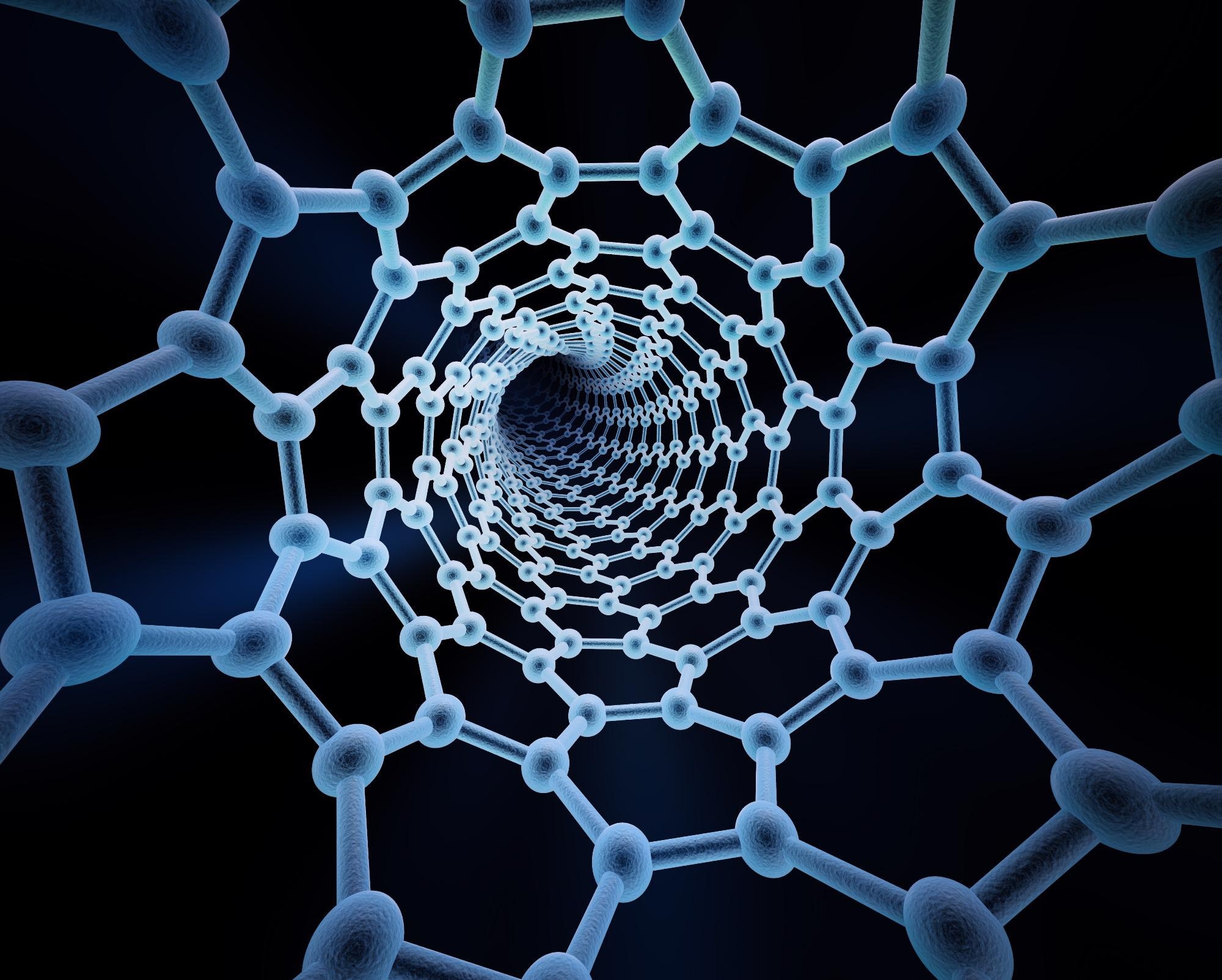A team of researchers from China, Australia and Poland has developed a lithography-free method to synthesize vertically aligned multi-walled carbon nanotubes (VA-MWCNTs). These VA-MWCNTs - synthesized by plasma enhanced chemical vapor deposition (PECVD) on a nickel catalyst - have tunable pitch and size.

Image Credit: Shutterstock.com/ Mopic
Synthesizing arrays of VA-MWCNTs requires periodically patterned arrays of nanoparticle catalysts. The multidisciplinary team developed a dewetting method on a thin nickel (Ni) catalyst film. They used a hexagonal silica (SiO2) monolayer as an array template. The diameters and lengths of the MWCNTs were adjusted as a function of the nickel particle size and PECVD application time.
This unique method of lithography-free synthesis of VA-MWCNT arrays opens up opportunities for the large-scale manufacture of biomimetic (nature mimicking) materials.
Synthesizing Carbon Nanotubes
Ever since carbon nanotubes entered public awareness in 1991, their unique properties have captured the interest of researchers across the world.
They are comprised of rolled up “sheets” (“tubes”) of graphene which can be single-walled (SWCNTs) or multi-walled (MWCNTs). MWCNTs are nested SWCNTs bound by van der Waals interactions. They can reach hundreds of nanometers in diameter.
MWCNTs possess unique electrical, thermal and mechanical properties, high light absorption capability and an extended surface area. They have a wide range of applications in supercapacitors, batteries, composite materials, cell culture scaffolds and near-perfect light absorbers.
Of particular interest is the replication of the properties of materials found in nature. For example, the self-cleaning properties of lotus leaves resulting from their hierarchical nanostructure are a subject of continued interest.
Carbon nanotubes are typically synthesized on the surface of a material using chemical vapor deposition (CVD). In this process, a liquid metal catalyst such as iron, nickel or cobalt reacts with a carbon-carrying gas to form carbon nanotubes.
To assist perpendicular growth (vertical alignment) of VA-MWCNTs, an electric field is applied to the gas, thus creating a plasma. This process is known as plasma-enhanced chemical vapor deposition (PECVD).
To arrange nanotubes into patterns, a catalyst-based template is required. Traditionally, this is fabricated using electron beam lithography, photolithography or nanosphere lithography. These require costly manufacturing methods such as etching and are not reproducible at a large scale.
However, the multidisciplinary team developed a dewetting method that involves retracting a fluid from a non-wettable surface such as nickel. This process yields a pattern of distributed nickel particles on a substrate that may grow vertically into nanotubes. To ensure an orderly distribution of nanotubes, the team patterned a silica (SiO2) monolayer substrate.
Lithography-Free Synthesis of Carbon Nanotubes
The team from South China Normal University, the University of Melbourne, The University of Queensland and the Polish Academy of Sciences demonstrated a lithography-free synthesis of periodically separated and vertically aligned multi-walled carbon nanotube (VA-MWCNT) arrays.
Using a dewetting process, they achieved a random distribution of nickel on a silica surface. As a thin nickel film was annealed (heat-treated), nickel islands appeared on the apices of silica nanospheres.
The silica surface was hexagonally patterned, resulting in a periodic distribution of MWCNTs as they grew perpendicular to the surface.
Using electron beam evaporation (EBE), a nickel thickness of 10 nm was deposited on silica nanospheres with 160 nm to 600 nm in diameter. A 25 nm film thickness was deposited on 500 nm nanospheres and a 30 nm film thickness on 600 nm nanospheres.
The VA-MWCNTs were then grown at 700°C, with a C2H2 carbon precursor to NH3 carrier gas.
The sizes of the silica spheres controlled the pitch of the array, and therefore the nearest neighbor distance of the VA-MWCNTs. The dimensions of the nickel particles and the nickel film thickness controlled the VA-MWCNT widths. Their lengths depended on growth times during the PECVD process.
Interestingly, the resulting VA-MWCNT arrays displayed hydrophobic properties, reminding us of the properties found on the lotus leaf.
The exceptional control of dimensions and structures at the nanoscale achieved by the team of researchers opens the door to the large-scale development of low-cost biomimetic materials.
References and Further Reading
Chen R., et al. (2021). Lithography-free synthesis of periodic, vertically-aligned, multi-walled carbon nanotube arrays. [Online] Nanotechnology. Available at: https://doi.org/10.1088/1361-6528/ac345a
Disclaimer: The views expressed here are those of the author expressed in their private capacity and do not necessarily represent the views of AZoM.com Limited T/A AZoNetwork the owner and operator of this website. This disclaimer forms part of the Terms and conditions of use of this website.